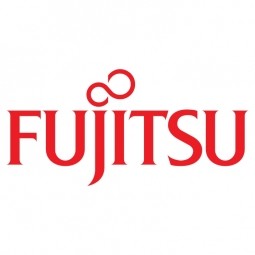下载PDF
IIC Factory Operations Visibility & Intelligence Testbed

技术
- 基础设施即服务 (IaaS) - 其他
- 平台即服务 (PaaS) - 数据管理平台
适用行业
- 电子产品
适用功能
- 离散制造
用例
- 工厂可见化与智能化
挑战
上下文和背景数据通常以各种格式隐藏;大量原始数据的存储和分发需要大量的计算资源和基础设施;需要将用于收集和分发数据的新计算机、服务器和网络设备的安装和维护成本降至最低。 GOAL为未来工厂运营可视化场景建立新的开放环境,具备数据上传和模拟能力以增强物理工厂设备;提供基于云的平台,可以结合工厂传感器和运营数据,以增强关键制造流程的可见性和分析,从而提高运营效率。
客户
未公开
解决方案
*这是一个 IIC 测试平台,目前正在进行中。*参与成员Fujitsu Limited, Cisco MARKET SEGMENT制造复杂的复合产品(即 IT 设备 - 笔记本电脑、网络设备等)。特点能够组合、可视化和关联在性质、来源和生命周期方面差异很大的各种数据源;可作为基于云的服务提供;支持基于交付计划中的优先级的制造和维修过程控制;使用增强的可视化渲染工具实现流程状态和流程、产品跟踪、计划和机械状态的可扩展性;用于分析和诊断的插件功能。测试平台介绍工厂运营可视性和智能 (FOVI) 测试平台可以模拟工厂环境,以可视化结果,然后可以使用这些结果来确定如何优化流程。 FOVI 的工作源于日本两家工厂的两个独立的操作可见性和智能应用程序:一个用于笔记本电脑,另一个用于网络设备。这两个用例在处理数据、分析和可视化技术方面有很多共同点。理想情况下,他们应该使用通用的软件基础,而他们的未来发展需要更开放的架构。测试平台的工作将由工业互联网联盟成员富士通有限公司和工业互联网联盟创始成员思科领导,在工厂内测试平台边缘基础设施方面进行合作。
收集的数据
Per-Unit Maintenance Costs, Product Lifecycle, Production Efficiency, Shipping Time, Throughput per product line
运营影响
相关案例.

Case Study
Remote Temperature Monitoring of Perishable Goods Saves Money
RMONI was facing temperature monitoring challenges in a cold chain business. A cold chain must be established and maintained to ensure goods have been properly refrigerated during every step of the process, making temperature monitoring a critical business function. Manual registration practice can be very costly, labor intensive and prone to mistakes.

Case Study
Cloud Solution for Energy Management Platform-Schneider Electric
Schneider Electric required a cloud solution for its energy management platform to manage high computational operations, which were essential for catering to client requirements. As the business involves storage and analysis of huge amounts of data, the company also needed a convenient and scalable storage solution to facilitate operations efficiently.

Case Study
Leveraging the IoT to Gain a Competitive Edge in International Competition
Many large manufacturers in and outside Japan are competing for larger market share in the same space, expecting a growing demand for projectors in the areas of entertainment, which requires glamor and strong visual performance as well as digital signage that can attract people’s attention. “It is becoming more and more difficult to differentiate ourselves with stand-alone hardware products,” says Kazuyuki Kitagawa, Director of Service & Support at Panasonic AVC Networks. “In order for Panasonic to grow market share and overall business, it is essential for us to develop solutions that deliver significant added value.” Panasonic believes projection failure and quality deterioration should never happen. This is what and has driven them to make their projectors IoT-enabled. More specifically, Panasonic has developed a system that collects data from projectors, visualizes detailed operational statuses, and predicts issues and address them before failure occurs. Their projectors are embedded with a variety of sensors that measure power supply, voltage, video input/ output signals, intake/exhaust air temperatures, cooling fan operations, and light bulb operating time. These sensors have been used to make the projector more intelligent, automatically suspending operation when the temperature rises excessively, and automatically switching light bulbs. Although this was a great first step, Panasonic projectors were still not equipped with any capability to send the data over a network.








